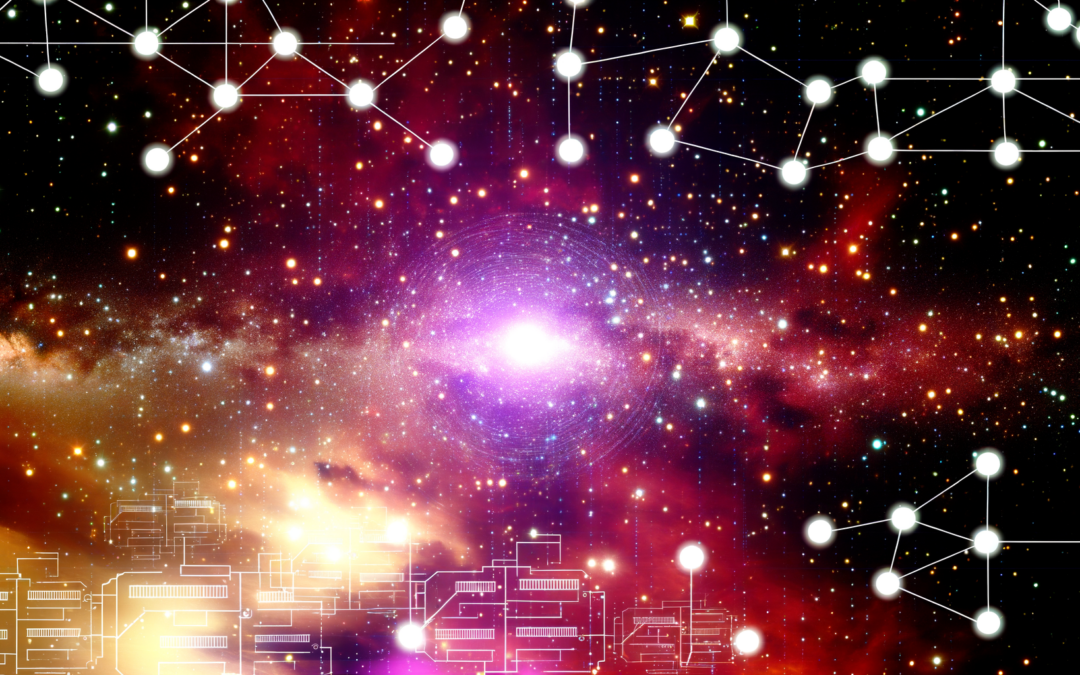This article delves into the vast expanse of space, examining its nature, philosophical implications, and scientific revelations. Additionally, we explore TC Space, a technological development in traffic control within Linux systems. Join us as we journey through these intriguing topics, unraveling their complexities and interconnections.
The Nature and Dimensions of Space
Space, as we perceive it, has been a subject of fascination and mystery for centuries. Philosophers like Plato, Aristotle, and Immanuel Kant have all pondered the nature of space and its dimensions. Plato believed that space was a sort of receptacle that held all things, while Aristotle saw space as the void in which objects exist. Kant, on the other hand, viewed space as a framework within which we organize our experiences.
However, with the advent of modern science, our understanding of space has evolved significantly. The transition to the concept of spacetime, as proposed by Albert Einstein in his theory of general relativity, has revolutionized our perception of the cosmos. According to Einstein, space and time are not separate entities but are interconnected in a four-dimensional continuum. This idea has been confirmed through various experimental observations, such as the bending of light around massive objects like stars.
Moreover, the introduction of non-Euclidean geometries has further expanded our understanding of space. Traditional Euclidean geometry, based on the work of Greek mathematician Euclid, describes space as a flat, two-dimensional surface. However, non-Euclidean geometries challenge this notion by allowing for curved surfaces and spaces of varying dimensions. This has profound implications for our understanding of the universe, as it allows for the possibility of multidimensional spaces beyond our conventional three dimensions.
Einstein’s theory of general relativity builds upon this idea by proposing that the curvature of spacetime is influenced by the presence of mass and energy. This curvature, in turn, affects the motion of objects through what we perceive as gravity. Experimental confirmations of general relativity, such as the bending of starlight during a solar eclipse, have provided strong evidence for this revolutionary theory.
In conclusion, the nature and dimensions of space have been a topic of contemplation and exploration throughout history. From the perspectives of ancient philosophers to the groundbreaking theories of modern scientists, our understanding of space has undergone profound transformations. By embracing non-Euclidean geometries and concepts like spacetime, we continue to push the boundaries of our knowledge and unlock the mysteries of the cosmos.
Scientific Advances and Theories
Space has long been a subject of fascination and intrigue for humanity. Over the centuries, key scientific theories have shaped our understanding of the cosmos and the vast expanse that lies beyond our planet. Among these theories are those put forth by groundbreaking thinkers such as Galileo Galilei, Isaac Newton, and René Descartes.
Galileo Galilei, a prominent Italian astronomer, revolutionized our perception of the universe with his heliocentric model. Instead of the Earth being the center of the universe, Galileo proposed that the Sun was at the center, with the planets, including Earth, revolving around it. This theory challenged the prevailing geocentric view held by many in the scientific community at the time and laid the groundwork for future discoveries about the nature of space.
Isaac Newton, another influential figure in the history of science, made significant contributions to our understanding of space and motion. Through his laws of motion and universal gravitation, Newton explained how objects move through space and interact with one another. His theories on gravitational attraction and the motion of celestial bodies were instrumental in the development of classical mechanics and provided a new framework for studying the dynamics of the cosmos.
René Descartes, a French philosopher and mathematician, also made important contributions to the study of space and motion. Descartes’ ideas diverged from traditional Aristotelian views, emphasizing the importance of mathematics and reasoning in understanding the physical world. He proposed a mechanistic view of the universe, in which space and matter were interconnected through a system of vortices. Descartes’ approach to space and motion laid the groundwork for future advancements in physics and astronomy.
These scientific theories and advancements have played a crucial role in shaping our current understanding of space and the fundamental principles that govern the cosmos. From Galileo’s heliocentric model to Newton’s laws of motion and Descartes’ mechanistic perspective, these ideas have paved the way for further exploration and discovery in the realm of space science.
Through the pioneering work of these visionaries, we have gained a deeper appreciation for the mysteries of space and the intricate relationships that exist between celestial bodies. Their contributions continue to inspire new generations of scientists and researchers to push the boundaries of our knowledge and venture into the unknown reaches of the universe.
TC Space – Technological Perspective
TC Space – Technological Perspective:
With the evolution of technology, the concept of TC Space has become increasingly crucial in the realm of network management, particularly in the field of Linux. TC, short for Traffic Control, plays a significant role in optimizing network performance by controlling and shaping network traffic.
One of the key functionalities of TC Space is packet scheduling, which involves managing the order of packet transmission in a network. By prioritizing packets based on various criteria such as quality of service requirements or network congestion levels, TC Space helps ensure efficient data transmission and reduces latency. Additionally, packet filtering is another essential aspect of TC Space, allowing network administrators to monitor and control the flow of data packets based on specific rules and criteria.
The use cases of TC Space are diverse and versatile. From ensuring smooth streaming of multimedia content to improving the overall user experience in online gaming, TC Space is integral to modern network management. Compared to traditional traffic control methods, TC Space provides more granular control over network traffic, allowing for better optimization and performance tuning.
In Linux systems, TC Space is implemented using the Traffic Control (TC) utility, which is a part of the IProute2 suite of tools. This utility allows network administrators to configure various aspects of traffic control, including bandwidth allocation, traffic shaping, and quality of service management. By leveraging TC Space, organizations can improve network efficiency, minimize congestion, and enhance overall network stability.
Moreover, TC Space is crucial for ensuring network security by enabling administrators to filter and prioritize traffic based on security policies and requirements. By implementing advanced packet filtering techniques, such as deep packet inspection, TC Space can help identify and mitigate potential security threats in real-time, thereby safeguarding the integrity and confidentiality of network data.
In conclusion, TC Space plays a pivotal role in modern network management, offering advanced capabilities for optimizing network performance, ensuring efficient data transmission, and enhancing network security. As technology continues to evolve, the significance of TC Space in network management will only grow, making it an indispensable tool for organizations seeking to achieve optimal network efficiency and reliability.
Integrating Concepts and Future Implications
Space and TC Space integration opens up a world of possibilities for advancing scientific and technological frontiers. The concept of space in physics has long fascinated humanity, leading to groundbreaking discoveries and innovations. When we explore the interconnectedness between space and technology, a multitude of opportunities for future advancements emerge.
In physics, space is not merely an empty void but a complex and dynamic entity that influences the behavior of matter and energy. Understanding the properties of space has enabled us to develop technologies that have revolutionized various fields, from communications to transportation. The integration of space concepts in technology has paved the way for groundbreaking inventions such as satellite communication, GPS navigation, and space exploration missions.
TC Space, on the other hand, represents a cutting-edge approach to traffic control in the realm of technology. By leveraging the principles of space and physics, TC Space offers a new paradigm for managing network traffic more efficiently and effectively. The ability to control packet scheduling and filtering in real-time enables enhanced network performance and optimized data transmission.
Looking ahead, the potential implications of integrating concepts of space and TC Space are vast. Future advancements in scientific and technological fields are likely to be driven by a deeper understanding of space and its applications in technology. Innovations in science and technology may lead to new breakthroughs in areas such as quantum computing, artificial intelligence, and space travel.
As technology continues to evolve, our understanding and management of space, both physical and virtual, will be profoundly influenced. Advances in space technologies, such as the development of advanced propulsion systems and space habitats, could open up new frontiers for human exploration and colonization. At the same time, advancements in TC Space could revolutionize the way we interact with digital spaces, enabling faster and more reliable communication networks.
In conclusion, the integration of concepts of space and TC Space has the potential to shape the future of science and technology in profound ways. By exploring the interconnectedness between these concepts, we can unlock new possibilities for innovation and discovery. As we continue to push the boundaries of what is possible, the merging of space and technology will undoubtedly drive new advancements and reshape our understanding of the cosmos and technological innovation.
Conclusions
In this article, we’ve journeyed through the intricate concept of space, from philosophical debates to scientific breakthroughs, and explored the technological realm of TC Space in network management. This exploration sheds light on the fascinating intersections between physical space and technological developments, paving the way for future advancements and deeper understanding.

